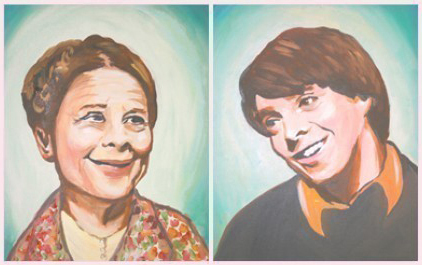| << Chapter < Page | Chapter >> Page > |
For some, overcoming despair might entail remarriage after the death of a spouse. A study conducted by Kate Davidson (2002) reviewed demographic data that asserted men were more likely to remarry after the death of a spouse and suggested that widows (the surviving female spouse of a deceased male partner) and widowers (the surviving male spouse of a deceased female partner) experience their postmarital lives differently. Many surviving women enjoyed a new sense of freedom, since they were living alone for the first time. On the other hand, for surviving men, there was a greater sense of having lost something, because they were now deprived of a constant source of care as well as the focus of their emotional life.

It is no secret that people in the United States are squeamish about the subject of sex. And when the subject is the sexuality of elderly people? No one wants to think about it or even talk about it. That fact is part of what makes 1971’s Harold and Maude so provocative. In this cult favorite film, Harold, an alienated young man, meets and falls in love with Maude, a seventy-nine-year-old woman. What is so telling about the film is the reaction of his family, priest, and psychologist, who exhibit disgust and horror at such a match.
Although it is difficult to have an open, public national dialogue about aging and sexuality, the reality is that our sexual selves do not disappear after age sixty-five. People continue to enjoy sex—and not always safe sex—well into their later years. In fact, some research suggests that as many as one in five new cases of AIDS occurs in adults over sixty-five years old (Hillman 2011).
In some ways, old age may be a time to enjoy sex more, not less. For women, the elder years can bring a sense of relief as the fear of an unwanted pregnancy is removed and the children are grown and taking care of themselves. However, while we have expanded the number of psycho-pharmaceuticals to address sexual dysfunction in men, it was not until very recently that the medical field acknowledged the existence of female sexual dysfunctions (Bryant 2004).

How do different groups in our society experience the aging process? Are there any experiences that are universal, or do different populations have different experiences? An emerging field of study looks at how lesbian, gay, bisexual, and transgender (LGBT) people experience the aging process and how their experience differs from that of other groups or the dominant group. This issue is expanding with the aging of the baby boom generation; not only will aging boomers represent a huge bump in the general elderly population but also the number of LGBT seniors is expected to double by 2030 (Fredriksen-Goldsen et al. 2011).
A recent study titled The Aging and Health Report: Disparities and Resilience among Lesbian, Gay, Bisexual, and Transgender Older Adults finds that LGBT older adults have higher rates of disability and depression than their heterosexual peers. They are also less likely to have a support system that might provide elder care: a partner and supportive children (Fredriksen-Goldsen et al. 2011). Even for those LGBT seniors who are partnered, some states do not recognize a legal relationship between two people of the same sex, which reduces their legal protection and financial options.
As they transition to assisted-living facilities, LGBT people have the added burden of “disclosure management:” the way they share their sexual and relationship identity. In one case study, a seventy-eight-year-old lesbian lived alone in a long-term care facility. She had been in a long-term relationship of thirty-two years and had been visibly active in the gay community earlier in her life. However, in the long-term care setting, she was much quieter about her sexual orientation. She “selectively disclosed” her sexual identity, feeling safer with anonymity and silence (Jenkins et al. 2010). A study from the National Senior Citizens Law Center reports that only 22 percent of LGBT older adults expect they could be open about their sexual orientation or gender identity in a long-term care facility. Even more telling is the finding that only 16 percent of non-LGBT older adults expected that LGBT people could be open with facility staff (National Senior Citizens Law Center 2011).
Same-sex marriage—a civil rights battleground that is being fought in many states—can have major implications for the way the LGBT community ages. With marriage comes the legal and financial protection afforded to opposite-sex couples, as well as less fear of exposure and a reduction in the need to “retreat to the closet” (Jenkins et al. 2010). Changes in this area are coming slowly, and in the meantime, advocates have many policy recommendations for how to improve the aging process for LGBT individuals. These recommendations include increasing federal research on LGBT elders, increasing (and enforcing existing) laws against discrimination, and amending the federal Family and Medical Leave Act to cover LGBT caregivers (Grant 2009).

Notification Switch
Would you like to follow the 'Introduction to sociology 2e' conversation and receive update notifications?